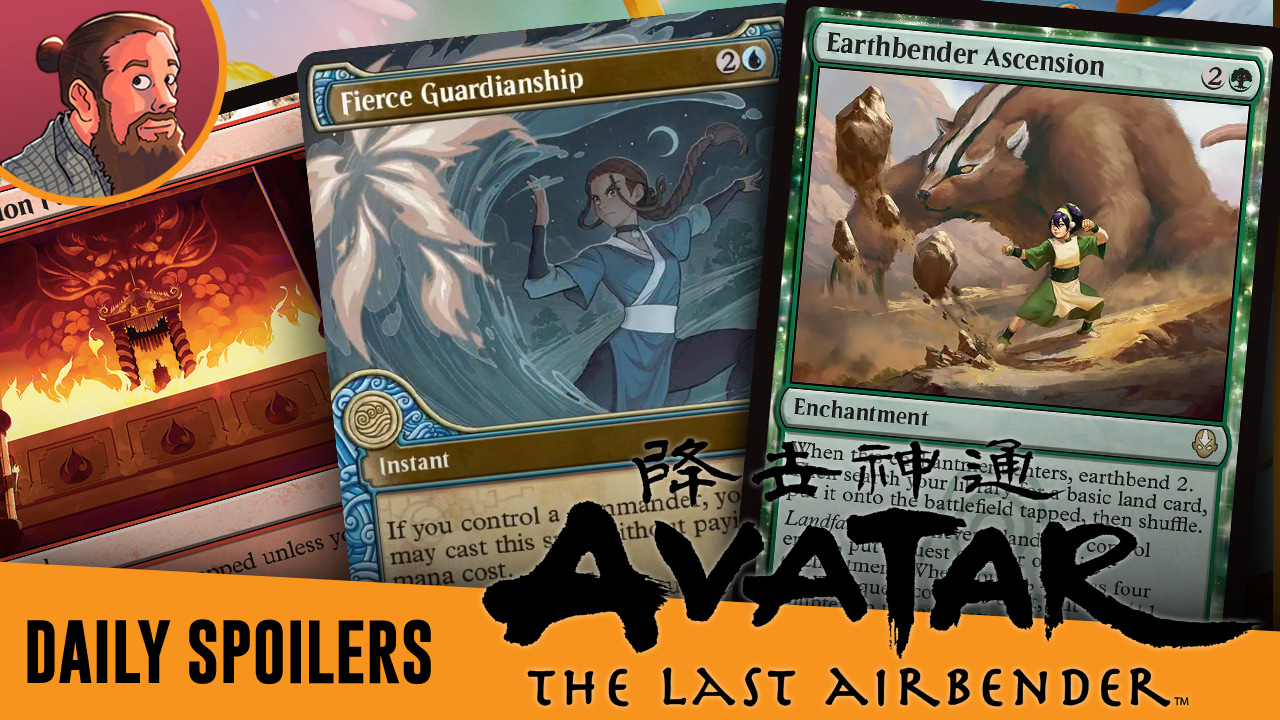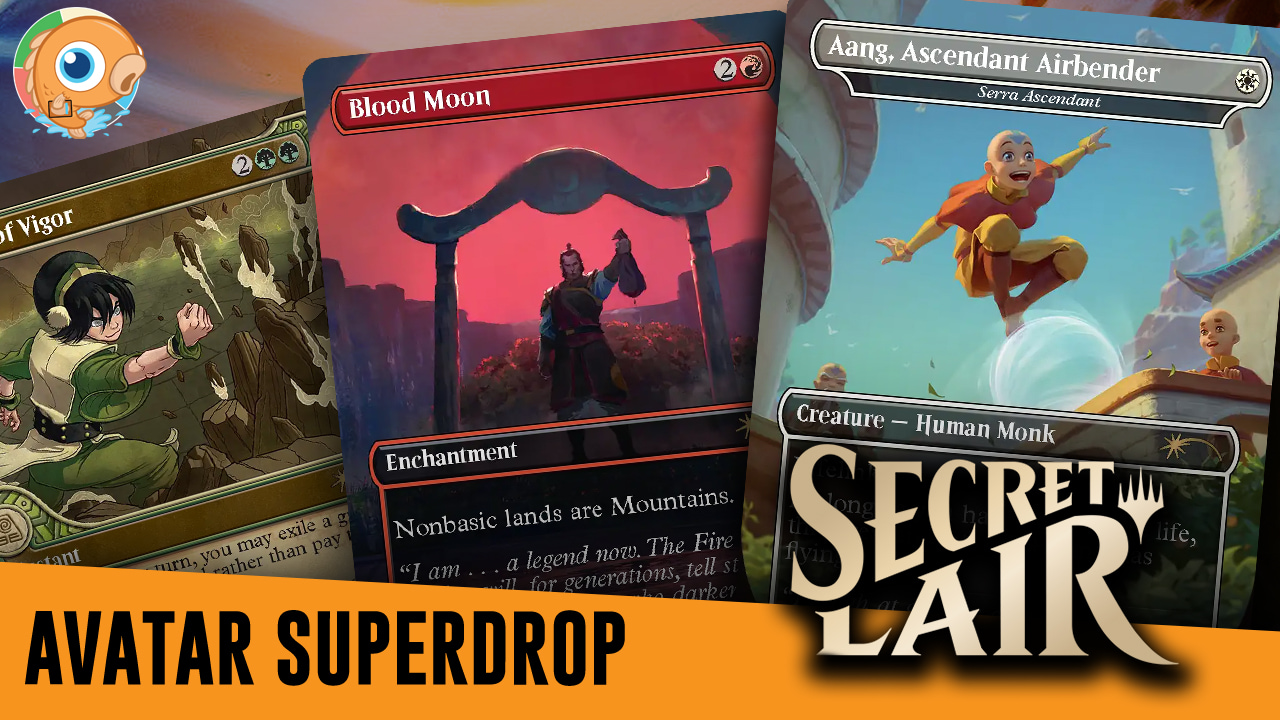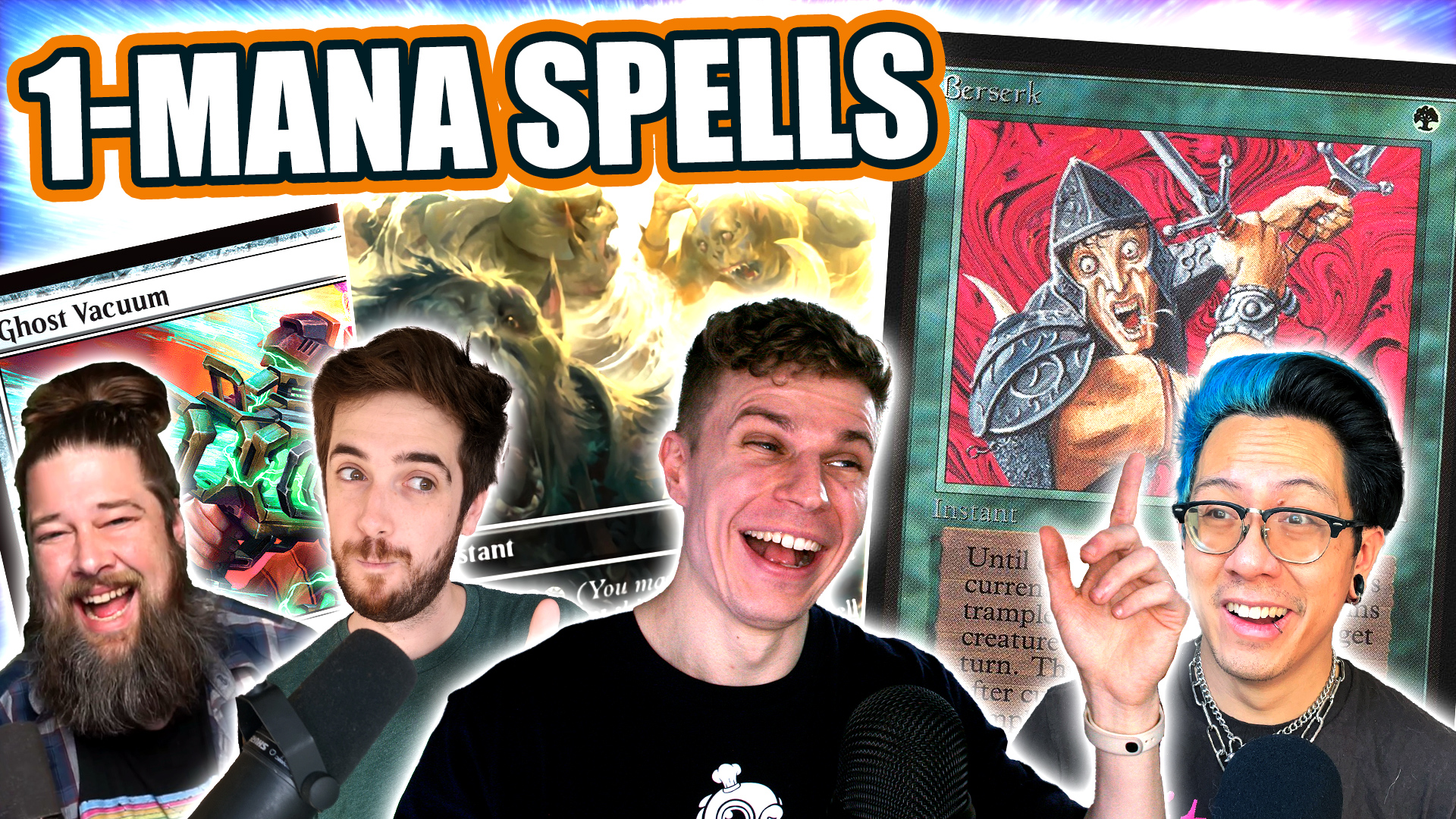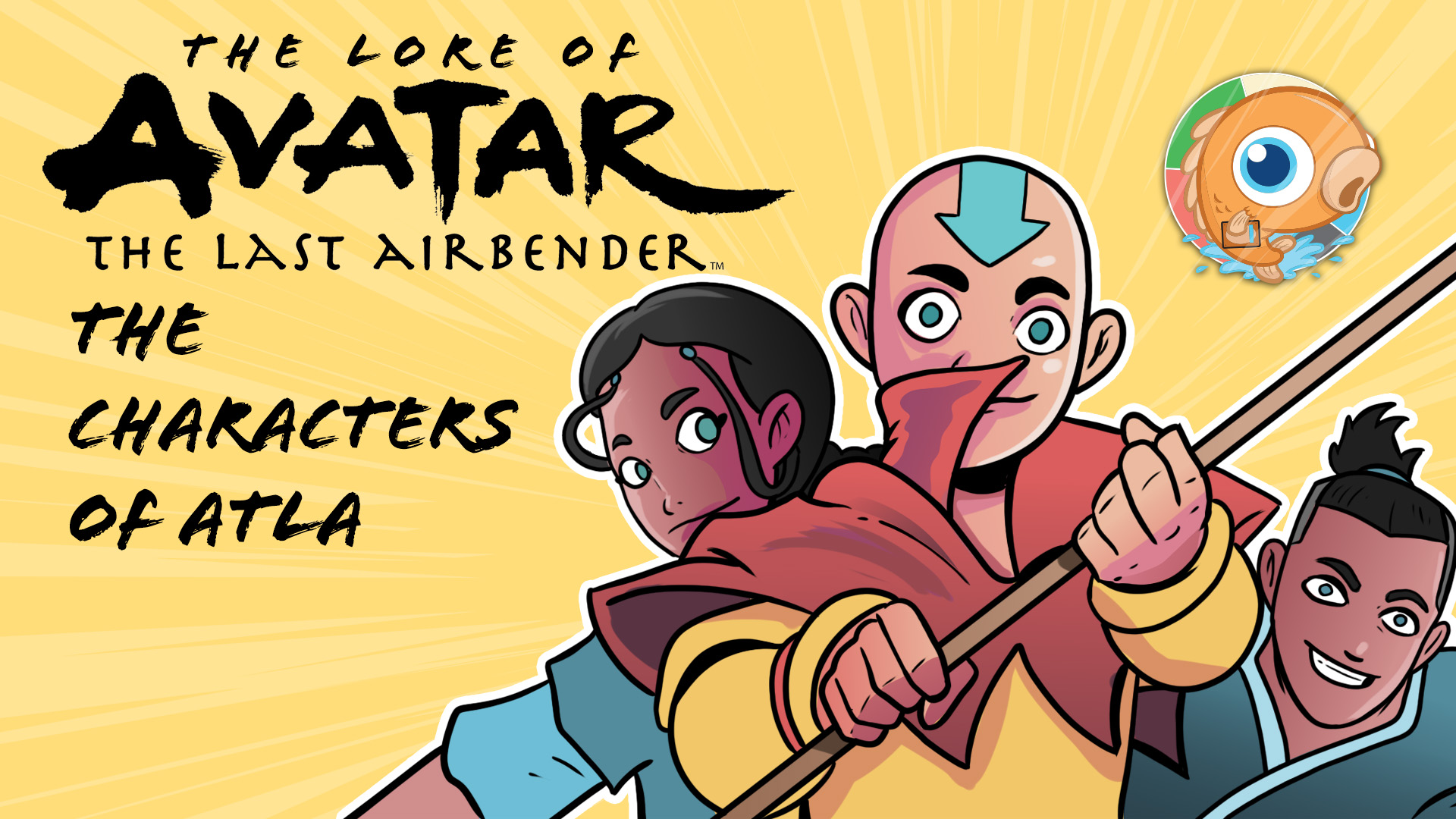The Meaning and Future of Hour of Devastation
Hour of Devastation preview season is in full swing, and the set is looking pretty interesting. A lot of cards seem to have a high power level but are lacking a clear home in our present Standard format. In some ways, this makes sense. Hour of Devastation is naturally at a disadvantage when it comes to seeing immediate play in Standard because our current Standard format is as big as Standard ever gets, containing a massive seven sets (and eight with Hour of Devastation itself). The good news is that this changes in less than three months, with all of Battle for Zendikar and Shadows over Innistrad blocks falling out of Standard with the release of Ixalan this fall.
When it comes to evaluating the last set that enters a Standard format, it's often better to do it with an eye to the future rather than the present. While a handful of cards will likely be so powerful on their own that they will push their way into decks right away, most cards will be waiting their turn and counting down the days until September 29 (Ixalan release day). In some ways, this is doubly true for our current Standard, where many of the top decks are synergy based and built around themes like energy, +1/+1 counters, and Zombies—themes that (apart from Zombies) aren't supported in Hour of Devastation.
So today, rather than taking a short view of Hour of Devastation (which is honestly a bit depressing at the moment, in terms of how many cards will see immediate play in Standard), let's take the more encouraging long view of the set. We'll start by talking about some specific cards that might not be good enough right now but have a chance to shine this fall after rotation (a discussion that, of course, comes with a warning: we still have part of Hour of Devastation and all of Ixalan to go, so it's always possible something strictly better gets printed), shift into a discussion of some of the challenges that face Hour of Devastation when it comes to breaking into Standard this fall, and then wrap up by talking about the big-picture implications of Hour of Devastation and why it might be the most important Standard set we've had in several years. Let's start with some cards that might start off slow but could end up big players in Standard in a few months.
Angel of Condemnation

Angel of Condemnation might be the best example of a Hour of Devastation card that is unplayable at present but has a chance to be quite strong after rotation this fall. The Angel is certainly powerful—we've seen "flicker" and "blink" creatures be staples all the way back to Modern in Eldrazi Displacer, Flickerwisp, and Restoration Angel, and a 3/3 flying body for four mana is fairly reasonable on its own, especially when you throw in vigilance, which allows Angel of Condemnation to both attack and use its ability in the same turn. As for the abilities, they offer a lot of flexibility—Angel of Condemnation can be the top end of an aggressive deck, getting in some evasive damage and flickering blockers out of the way to allow for even bigger attacks, and it can also be an Eldrazi Displacer-like value card, flickering our own creatures with enters-the-battlefield triggers, like Cloudblazer (which will still be around after rotation, after all).


So, if Angel of Condemnation is both powerful and flexible, why does it have close to zero chance of seeing play in our current Standard format? The answer here is competition. The true power of a card is how good or bad it is compared to other similar options in a format, and right now, Angel of Condemnation is pretty far down the list as far as white four-drops are concerned. Gideon, Ally of Zendikar is currently the king, and it's hard to imagine that any deck (budget concerns aside) would choose to play Angel of Condemnation over what might be the most powerful card in all of Standard, and even if you found a white deck that didn't want Gideon, Ally of Zendikar in the four-drop slot, Angel of Condemnation is still competing with Gisela, the Broken Blade and, in token decks, Anointed Procession. As such, no matter what type of white deck you are building, Angel of Condemnation is almost certainly the second- or third-best option in the four-drop slot.


The good news is that this changes drastically at rotation—apart from token decks, which will still have (and want) Anointed Procession, the next best white four-drop we know of thus far is Oketra the True, which really only fits into a go-wide, aggressive creature deck and isn't anywhere near Gideon, Ally of Zendikar in terms of being a must-include threat. As a result, Angel of Condemnation should fly up the white four-drop ranking come rotation and might even be the most powerful option in the slot. More importantly, there are still a lot of sweet things to blink for value, including all of the Gearhulks, Cloudblazer, Gonti, Lord of Luxury, and Regal Caracal, and all of these cards will be more powerful in September than they are today when Standard is half its current size.
As such, even though it's exceedingly unlikely that Angel of Condemnation will see immediate play in Standard, if you happen to crack a copy or two while opening a box or playing in your Hour of Devastation prerelease, don't be too disappointed because there's a very real chance her day will come this fall. We've seen similar cards be played to great success in Standard, and Angel of Condemnation might end up the default white four-drop thanks to the dearth of other options in the format.
Pride Sovereign

While a bit slow, Pride Sovereign is another card that potentially offers a lot of value to a Standard deck—if you can exert just a single time, you end up with a 4/4 and two 1/1s with lifelink for a total of four mana, which is a great deal. However, there's not one but two things keeping Pride Sovereign from seeing play right away. First, much like Angel of Condemnation, there are two cards that dominate the green three-drop slot: Nissa, Voice of Zendikar (especially in token builds) and Tireless Tracker. It's hard to imagine that Pride Sovereign can overtake either immediately because both offer a more immediate form of value, while Pride Sovereign makes you wait to untap.


![]()
The second problem has to do with the format on a more meta-level: Pride of Sovereign is at its best in some sort of Cat or token strategy, and right now, traditional GW Tokens offers a higher power level than what Cats or an alternative build of tokens can offer. However, come rotation, the entire foundation of GW Tokens (Nissa, Voice of Zendikar, Gideon, Ally of Zendikar, and Oath of Nissa) rotates from Standard, which opens up all sorts of possibilities for a new GW archetype. While Rhonas the Indomitable and Rishkar, Peema Renegade will offer competition in the three-drop slot post-rotation, it's very possible that, at least in certain decks, Pride Sovereign is better than either or at least finds a home as the second three-drop in a deck. Take a look at a way-too-early draft of GW Cats for post-rotation Standard:

I fully expect that, as the rest of Hour of Devastation and all of Ixalan is revealed, we'll be able to replace some of the worst cards in the deck (like Initiate's Companion) with more powerful options, but even in its current form, Cats have a really solid curve. With traditional GW Tokens losing the title of best GW deck at rotation, the format will be open for a deck like this to exist. In this deck, Pride Sovereign is amazing. It will regularly come down on Turn 3 as a 4/4, which is already Loxodon Smiter territory, and then will not only grow quickly into a 6/6 but potentially take over the game with the help of cards like Regal Caracal and Anointed Procession making a bunch of Cat tokens. And this doesn't even consider the impact of Ixalan—while I'm not going to talk about individual cards, it's worth noting that the set seems to have a strong "creature types matter" theme, and as weird as it sounds, Cats may be one of the most supported tribes in post-rotation Standard..
Hour of Glory

Hour of Glory is a "wait for rotation" card for a couple of reasons. Most importantly, the power of Hour of Glory is mostly tied to the power and playability of the Gods—while it can be played as an expensive removal spell, unless there are a lot of Gods running around, it's mostly worse than Murder and significantly worse than Cast Out or Anguished Unmaking. However, the Gods are powerful, and there's a fairly realistic shot that some of them get a big bump in play after rotation this fall, when there will be much less competition for finishers and expensive threats (although the existence of the Gearhulk cycle will still be a concern for some of the Gods). The other problem with Hour of Glory at the moment is that there are better options available for some decks. BW Control, for example, would rather just play Anguished Unmaking and Cast Out, which moves Hour of Glory down the removal list a bit. While it's not impossible that Hour of Glory shows up as a one-of immediately, it could be much more important in post-rotation Standard, where Gods might be much more popular.
Ramunap Excavator

Ramunap Excavator could see play right away in some sort of The Gitrog Monster build, which sounds like a super-fun deck, but The Gitrog Monster has been in Standard a long time now, and no one has figured out a way to make it work. That said, there are a couple of reasons to think that Ramunap Excavator could be pretty good after rotation this fall. Right now, Ramunap Excavator suffers from the fact that the cycling lands rank behind both the fast lands and creaturelands (and in some cases, even the horrible Shadows over Innistrad duals) in terms of level of play in Standard. At rotation, we'll be losing both the creaturelands and Shadows over Innistrad duals, which naturally moves the cycling lands up the Standard dual land rankings. It's also possible that the mono-colored desert cycling lands see more play after rotation, which would further support Ramunap Excavator, and Evolving Wilds also survives rotation.
![]()
In a weird way, Ramunap Excavator is the most natural replacement for Tireless Tracker in Standard—while likely not as powerful, the play pattern it supports is very similar as a three-drop that generates immediate value and card advantage if you are willing to wait until Turn 4 to play it. For Tireless Tracker, this value is getting a Clue, while with Ramunap Excavator, it's getting a land back from the graveyard. In fact, Ramunap Excavator offers almost exactly the same deal as Tireless Tracker—you pay two mana to draw a card and get a land drop—with the main difference being that the order is reversed (with Tireless Tracker, you play the land first and then draw at your leisure, while Ramunap Excavator draws the card first and then lets you play the land at your leisure), although the downside is that Ramunap Excavator's ability only really works with cycling lands, while Tireless Tracker can draw you cards with any land.
One of the biggest problems with most green and black cards in our upcoming Standard is that the colors are dominated by GB Energy, which loses very little at rotation and is a hard deck for new cards to break into, since it is based on a synergy found exclusively in Kaladesh block (more on this momentarily). While it's possible that hate like Solemnity knocks the deck down a bit and opens up the format to other GB-based archetypes, the power of the energy mechanic is a real concern. However, the two cards that GB Energy does lose at rotation are Tireless Tracker and Nissa, Voice of Zendikar, and while it's possible that Rhonas the Indomitable fills a couple of those slots, there might be room for a copy or two of Ramunap Excavator to fill in for Tireless Tracker in grindier matchups.
The Good News
From a meta-perspective, the goods news for Hour of Devastation is that cards that survive rotation tend to naturally become more playable—it's a simple numbers game. The power level necessary for a card to see play in a format with 1,500 cards is much higher than in a format with 800 cards. Rotation also brings with it the incentive to brew, which means people will be encouraged to give Hour of Devastation cards another look come September, as opposed to right now, when many players will just keep playing the Zombies, Vehicles, and Energy decks that they already have built and spent hours practicing. This isn't to say that we won't see some Hour of Devastation cards right away. People will certainly try to build decks around Nicol Bolas, God-Pharaoh and some of the Gods, Hour of Devastation will immediately become the best wrath in the format, and Solemnity seems like a sideboard staple, not to mention various removal spells and utility cards that could sneak in here or there. However, the biggest impact from Hour of Devastation will likely come this fall, but even here we have a problem.
Block Constructed Standard
Our current Standard format is extremely unique: the top two decks in the format at the moment are Temur Energy and GB Energy, both of which are essentially Kaladesh Block Constructed decks. Right now, we have four blocks in Standard, but take a look at how the non-land cards in these two decks break down by block.


As you can see, the two most popular decks in Standard are made up of between 82% and 84% Kaladesh block cards, which is a truly staggering number. The exceptions in these two decks are that both play two copies of Tireless Tracker from Shadows over Innistrad block. While Temur Energy plays two copies of Glorybringer and two Magma Spray from Amonkhet block, GB Energy reaches back into Battle for Zendikar block for three Nissa, Voice of Zendikar and two Grasp of Darkness.
The problem here is that it will be almost impossible for new cards from Hour of Devastation to break into these decks because they revolve around two themes: energy and +1/+1 counters, neither of which are supported in Amonkhet block. This leaves us in a really unique situation: when Standard rotates in the fall, the two best decks in the format are essentially unchanged, which leaves Hour of Devastation cards with an uphill battle to break into the top tier of the format, and since neither of the top two decks can play more than a handful of utility cards from other blocks, Hour of Devastation is unlikely to have a heavy presence in these decks either.

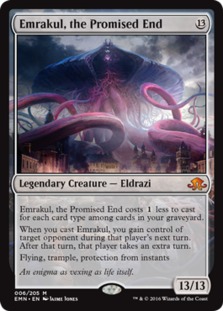

Over the past year or two (since we shifted to two-set blocks), the answer to the block Standard problem was that each new set had a super-pushed theme or mechanic, so rather than joining forces with the big theme from the past block, the new cards simply banded together to fight against the previous best deck (for example, Colorless Eldrazi from Battle for Zendikar battling Delirium from Shadows over Innistrad battling Energy and Vehicles from Kaladesh), which left us with Standard formats that felt a lot like block battles, which isn't necessarily a bad thing but is different than what we were used to in the past, when sets from bigger three-set blocks tended to work together.
The problem for Hour of Devastation (and Amonkhet block as a whole) is that it seems to be the set where Wizards moved away from having one or two very pushed themes or mechanics in a set. While cycling may have potential to pick up that mantle, we haven't seen any of the other Amonkhet mechanics really form their own deck—instead, the best cards with aftermath, embalm, and exert tend to show up as support cards in other archetypes (like Glory-Bound Initiate in Humans or Cut // Ribbons in Mardu Vehicles). As such, there's a pretty realistic chance that Amonkhet block in general is (somewhat) left out in the cold this fall while Vehicles and Energy battle it out for Standard supremacy.
To reiterate, this doesn't mean that Hour of Devastation won't see play, just that it will likely see less play than we are used to because the set is different than what we've seen over the past couple of years. Instead of being built around one or two extremely pushed mechanics, it has some sweet flavor, powerful standalone cards, and light synergies but feels more like a traditional good Magic set than a set with a couple of pre-built decks pushed for constructed. While it might sound strange, this is why I love Hour of Devastation and believe it might be one of the most important Standard sets we've had in several years.
Looking to the (Semi-)Distant Future
The biggest reason why I'm excited for Hour of Devastation is that it seems to bring the end of some of the worst aspects of the metamorphosis, which means six months or a year from now, Standard should be back to where it was for the first 23 years of Magic rather than the last two. While it's a bit sad that Hour of Devastation itself may pay the price by being comparatively underplayed in Standard thanks to the highly synergistic power of Kaladesh block, some set sooner or later was going to have to pay this price, and if it means that Standard will be back on track for the long haul, it will certainly be worth it.
When we look back on Standard in a year or even five years, Hour of Devastation—whether its cards actually make a huge impact on Standard or not—will be the set we point to where everything changed for the better. It will be the set that brought Standard from the desert of bannings, lack of answers, and overly pushed (and often parasitic) block mechanics and into the promised land of fun, health, and stability. If you're familiar with the story of the Israelites in Egypt, which fittingly seems to be running through the flavor of Hour of Devastation, you'll know that Moses, who led the Israelites out of Egypt to freedom, didn't actually make it to the promised land—instead, he died after 40 years of wandering in the desert, close enough to the promised land that he could see it. Fittingly and flavorfully, this may very well be the fate of Hour of Devastation as well, not quite reaching the promised land of an amazing and healthy Standard format itself while still being the primary reason that the format made it out of the desert.
Conclusion
Anyway, that's all for today. What do you think of Hour of Devastation's chances of making an impact in Standard? Which cards do you think will see immediate play? Are there any other cards you'll be keeping an eye on for post-rotation Ixalan Standard this fall? As always, leave your thoughts, ideas, opinions, and suggestions in the comments, and you can reach me on Twitter @SaffronOlive or at SaffronOlive@MTGGoldfish.com.


